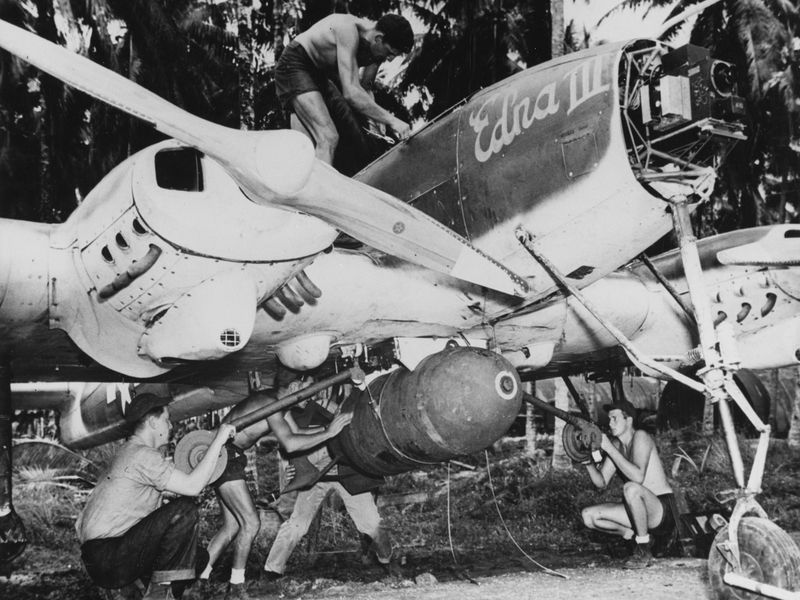Navy officer Delmar Fahrney was among the first visionaries to realize that remotely piloted aircraft could be used to deliver ordnance without putting soldiers at risk. Fahrney was instrumental in creating three Special Task Air Groups (STAGs) to deploy drones in the Pacific Theater.
The program, started in 1942, used cheap-to-make and easy-to-fly twin-engine drones, designated TDR-1s. Drones were a low-priority proposition, built by Interstate Aircraft out of pressed wood (created by piano-maker Wurlitzer) over tubular metal frames (erected by bike-maker Schwinn). Each one had a removable cockpit, so it could be ferried by a human pilot. But it was designed to be flown via radio-control by a pilot in a TBM Avenger torpedo bomber accompanying the drone.
The secret of the TDR-1 was a new form of top-secret technology: an RCA television. A camera mounted in the drone’s nose transmitted images back to a five-inch screen mounted in the Avenger’s rear cockpit. Although the green, high-contrast display was too crude for watching baseball or a movie, it was good enough for spotting ships on the horizon, which made it valuable for the naval war being fought in the Pacific.
Nevertheless, drones faced resistance from Navy critics, and STAG One wasn’t shipped to the Solomon Islands until June 1944. There, the unit encountered primitive conditions. “The tropical climate could, and did, wreak havoc with electronic equipment,” drone pilot James J. Hall wrote in his memoir,
On July 30—called “D-day” in STAG One’s official war diary—four TDR-1s flew a demonstration mission against a derelict Japanese freighter beached near Guadalcanal. Three of them slammed into the target; two detonated as planned. Film of the assault was shown to Navy brass in Pearl Harbor, who granted permission to mount combat operations.
On September 27, 1944, four drones, each armed with a 2,000-pound bomb, flew 55 miles to Bougainville to attack an anti-aircraft battery the Japanese had established on a beached merchant vessel. One of the TDR-1s was lost at sea. A second crashed 30 yards astern of the gun emplacement, but the bomb failed to detonate. The third probably hit the port side of the ship. The fourth flew through flak to land dead-center on target and explode.
Combat operations with the drones continued for the next month. With the range of the attacks extended to 160 miles, STAG One attacked gun installations, bridges, caves, a cargo ship, and a lighthouse. The standard technique was to fly the TDR-1 directly into the target, but on occasion the drone dropped bombs remotely.
Overall, the drone’s performance was mixed but promising. Fifteen of 46 drones were lost before reaching their objective; of the rest, perhaps half hit or came close enough to damage the target. According to a Navy postmortem: “The drone is capable of precision attack given a target of sufficient size and sufficient definition as to be visible in the television screen.”
Source: Air & Space

